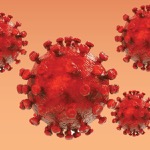
The treatment of HIV has evolved over the last 40 years to a point where the life expectancies of people with HIV rival those without the disease. Typically, people older than 50 years of age are considered “older adults” or “aging” in the HIV literature.1 In this new reality, the focus is not only on HIV treatment but the comprehensive management of all comorbid conditions. Major comorbidities in this population include cardiovascular disease, hypertension, diabetes mellitus, and malignancy.2 HIV medications must now be selected to maximize the quality of all disease treatments, especially considering the effect that chronic inflammation, immune activation, and immunosenescence associated with HIV can have on comorbidities.3 Aging also may be accompanied by physiologic changes that can affect drug exposure or response.4 Age-related changes in pharmacokinetics and pharmaco- dynamics must be considered.5 Providers must go “beyond undetectable” when considering the management of HIV in this population.
All older adults also should be considered for HIV screening. It is a misconception that people older than 50 are unlikely to be at risk for HIV.1 This may cause an overall delay in diagnosis.3 Once started on antiretrovirals, virologic response in older patients is similar to younger patients; however, the immune reconstitution response may be blunted. Drug exposure may be increased due to the decline in kidney and hepatic function with age. This may lead to a higher incidence of adverse effects.1 Pretreatment immune dysregulation may be persistently present even after initiation of treatment. However, persistent viral suppression may mitigate immune dysregulation over time.6
Clinical symptoms related to cognition, behavior, or gait may be present in those with stably suppressed HIV.7 Typically, more than 1 etiology may be involved with geriatric syndromes, including falls, frailty, and delirium.8 The immune activation caused by HIV may exacerbate these multifactorial health conditions. Cognitive impairment should be assessed with appropriate screening.7 Impairment may be caused by the aging process or HIV disrupting the blood–brain barrier.9 Multiple factors likely contribute to cognitive impairment.9 Older people with HIV had a 3-fold increased likelihood of subjective cognitive decline compared with sero- negative counterparts.10 In a study of 100 people with HIV, the cognitive impairment rate was 5% and associated with physical frailty.11 Thirty percent of the cohort was considered “pre-frail,” highlighting the importance of early intervention. Frailty may lead to structural and functional brain changes; these changes may be subtle and not detected on typical neuropsychological tests.12 Frailty and sarcopenia should be considered in the aging population with HIV to avoid loss of function.11 Of note, older people with HIV have been reported as less active than their counterparts without HIV.13 This may have further implications on frailty.
Specific training for geriatricians may be recommended to facilitate their comfort level in caring for people with HIV. Training may include knowledge of HIV, specific issues related to older people with HIV, screening for HIV in older adults, and managing older LGBTQIA+ people with HIV.14 Integrated programs have high provider and patient satisfaction scores and provide a comprehensive care approach.15 Loneliness and depressive symptoms also may be present and should be addressed, potentially by expanding social networks.16,17
A careful drug–drug interaction screening and targeted adherence counseling are needed. Drug–drug interactions include those that limit the maximum dose of medications, such as statins.4 Non-antiretroviral medication classes typically involved in drug–drug interactions include cardiovascular, central nervous system, hormonal therapies, and dietary supplements.18 Certain antiretroviral classes are more prone to drug–drug interactions than others.18 While the integrase strand transfer inhibitor class has fewer drug–drug interactions, screening should still be completed, as potential interactions are still possible.19
Polypharmacy
Polypharmacy is another concern in the aging population. It is defined as taking 5 or more medications.20 Simply put, polypharmacy is taking an excess of medications for ill-defined reasons.3 Polypharmacy is associated with more complex medication management, the potential for drug–drug interactions, risk for adverse events, and reduced adherence.21,22 It has also been linked to increased hospitalizations.23 Polypharmacy affects 37% to 44% of aging people with HIV, although some studies report a higher rate.4 In a cross-sectional study of 197 people with HIV aged 65 years or older, polypharmacy was identified in 93% of patients (defined as taking 5 or more medications). Logistical regression revealed that after adjusting for age, people whose regimen included a non-nucleoside reverse transcriptase inhibitor had a higher probability of polypharmacy (odds ratio, 4.29; 95% CI, 1.27-14.52; P=0.0193).21 Potential drug–drug interactions were present in 65%. Another study found that age older than 50 years was independently associated with potential drug–drug interactions.24 Research also suggests people with HIV taking more than 15 medications are less likely to have undetectable HIV RNA.25
A potential method to counteract polypharmacy, drug–drug interactions, and potentially inappropriate medications in the aging population with HIV is to deprescribe medications. Deprescribing is “a process of withdrawal of an inappropriate medication, supervised by a health care professional with the goal of managing polypharmacy and improving outcomes.”26 When deprescribing, the complexity of medications should be considered. Characteristics of complexity include the number of units per dose, dietary restrictions, and the need for additional instructions for correct administration.26 A commonly used tool to deprescribe is the Medication Regimen Complexity Index, which has been validated in people with HIV. This index has sections for the formulation, frequency of administration, additional guidelines, and collection of information on the treatment of the primary disease, other conditions, and over-the-counter medications. Research shows that directing deprescribing resources toward people taking more than 11 chronic medications is likely to have the most significant impact.27
Deprescribing should be viewed as a positive, patient-centered intervention that involves a shared decision-making process with the patient.26 Studies report that 52% to 66% of older people with HIV had at least 1 medication-related issue.4 Potentially inappropriate medications (reported in one-third of aging people with HIV) should be carefully assessed and discontinued when appropriate based on adverse events or comorbid conditions.4 The “prescribing cascade” occurs when an adverse event is treated as a new medical condition. This results in a potentially inappropriate medication being initiated. To avoid the “prescribing cascade,” careful deprescribing and monitoring for adverse events should be completed at each healthcare visit.5
As the population with HIV continues to age, consideration for changing needs should be factored into a shared decision-making process.28 Clinicians should be comfortable referring to specialists and ensuring that all necessary screenings are completed. Drug–drug interactions, polypharmacy, and comorbidities should be evaluated in addition to HIV monitoring parameters.
References
- Burgess MJ, et al. HIV AIDS (Auckl). 2015;7:251-264.
- Smith JM, et al. AIDS. 2017;31 (suppl 2):S173-S184.
- FernÁndez CaÑabate S, et al. Colomb Med (Cali). 2019;50(3):142-152.
- Courlet P, Livio F, et al. Open Forum Infect Dis. 2019;6:ofz531.
- Marzolini C, et al. Expert Rev Clin Pharmacol. 2019;12(7):643-659.
- Novak RM, et al. AIDS. 2022;36(6):815-827.
- Chan P, et al. Top Antivir Med. 2022;29(5):423-429.
- Guaraldi G, et al. Expert Rev Clin Pharmacol. 2018;11(12):1171-1181.
- Magaki SD, et al. J Neuropathol Exp Neurol. 2022;81(7):565-576.
- Thompson JL, et al. Neuropsychol Dev Cogn B Aging Neuropsychol Cogn. Published online April 12, 2022. doi:10.1080/13825585.2022.2065241
- Houssein M, et al. HIV Med. Published online April 19, 2022. doi:10.1111/hiv.13311
- Strain JF, et al. Clin Infect Dis. Published online April 11, 2022. doi:10.1093/cid/ciac271
- Luo S, et al. AIDS Behav. 2022;26(7):2435-2445.
- Jones HT, et al. Eur Geriatr Med. Published online April 9, 2022. doi:10.1007/s41999-022-00642-4
- Tan JY, et al. AIDS Behav. 2022;26(5):1562-1571.
- Yoo-Jeong M, et al. AIDS Behav. 2022;26(9):3147-3152.
- Yoo-Jeong M, et al. AIDS Care. Published online March 31, 2022. doi:10.1080/09540121.2022.2057907
- El Moussaoui M, et al. Open Forum Infect Dis. 2020;7:ofaa416.
- Kunimoto Y, et al. J Pharm Health Care Sci. 2021;7(1):43.
- Greene M, et al. J Am Geriatr Soc. 2014;62(3):447-453.
- Bastida C, et al. Farm Hosp. 2017;41(5):618-624.
- Morillo-Verdugo R, et al. Enferm Infecc Microbiol Clin (Engl Ed). 2022;40:7-13.
- Justice AC, et al. Lancet Healthy Longev. 2021;2(10):e639-e650.
- Chen R, et al. J Infect Chemother. 2020;26(7):722-728.
- Murray MM, et al. HIV Med. 2021;22(8):742-749.
- Blanco JR, et al. Eur J Clin Pharmacol. 2020;76(3):305-318.
- McNicholl IR, et al. Pharmacotherapy. 2017;37(12):1498-1506.
- Kiplagat J, et al. Lancet HIV. 2022;9(4):e281-e292.
This article is from the October 2022 print issue.






